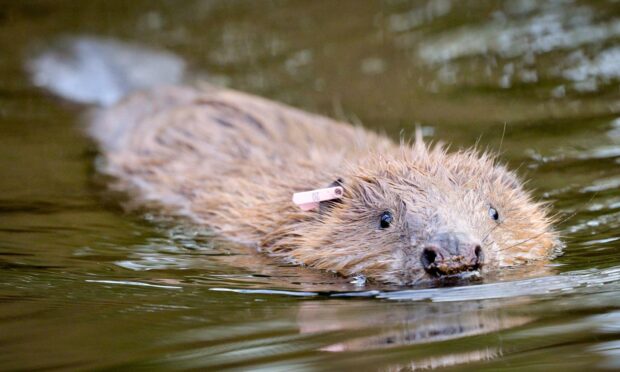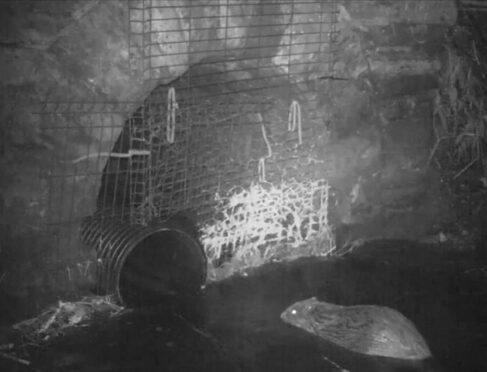Engineers at Network Rail have constructed what is believed to be the first specialised “beaver pass” under the Highland mainline.
The idea was to help protect the animals as they cross under the tracks but also to limit the damage from flooding that was caused by beavers building dams across the railway’s drainage culverts located under the line.
As part of the project an additional 45mm pipe has been inserted through an existing larger culvert drain with wild mesh fitted either side to protect the railway while still allowing the movement of wildlife.
A culvert near Gleneagles was blocked by part of a beaver lodge – leading to flooding on an area of land which formed part of a Site of Special Scientific Interest (SSSI) designated for wet woodland, scrub and fen meadow habitats.
Working with species specialists at NatureScot, the Network Rail team pumped the water out of the area over several days before removing the 2m high 5m wide beaver dam by hand.
‘It is a repeatable solution which works to protect Scotland’s Railway as well as safeguarding the beaver populations’
When the culvert was clear, the beaver pass was installed in line with SEPA best practice guidelines for altering culverts, to enable wildlife, including beavers and otters, to pass safely under the railway.
James Morrison, ecologist, with Network Rail Scotland, said: “To a beaver, a culvert probably looks like a hole in a dam – the barriers they build to restrict the flow of water – so they are very popular damming spots.
“The action we took near Gleneagles is the first beaver pass installed in the country that we are aware of. It is a repeatable solution which works to protect Scotland’s Railway as well as safeguarding the beaver populations and other wildlife.
“The beavers will naturally expand across Scotland and as they do it is possible they could occasionally impact Network Rail’s infrastructure through felling trees on to the line, flooding caused by their dams or burrowing into railway embankments.”
Dr. Roo Campbell, a member of NatureScot’s Beaver Mitigation Team, said: “Beavers are an important component of a healthy ecosystem whose presence usually brings a host of benefits, including creating ponds and wetlands where other species thrive, alleviating downstream flooding, and improving water quality.
“But occasionally they can cause issues. Our team advise on and provide mitigation against beaver issues across Tayside, but this situation is definitely one of the most challenging we’ve faced.”

